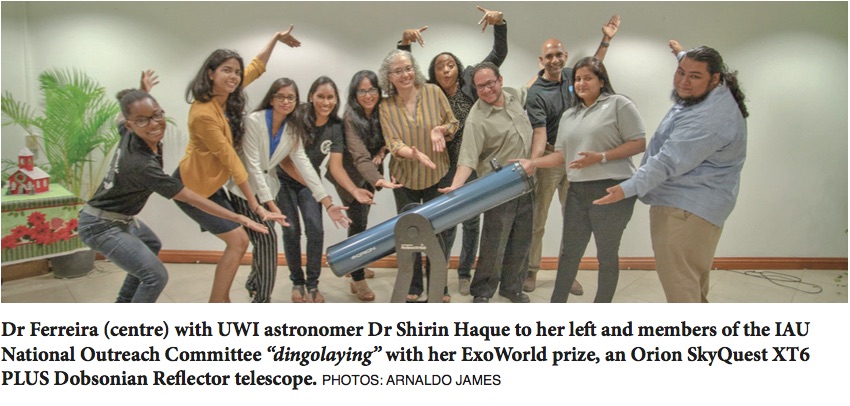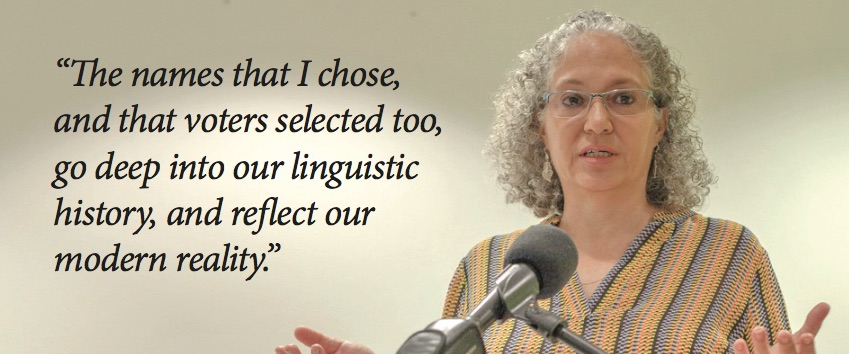

“The significance and power of names and naming have been recognised since Adam and Eve. Words are like the surface of the sea – there is far more to them than meets the naked eye. Take nothing for granted and let’s dig deep.”
This is what Dr Jo-Anne Ferreira, Senior Lecturer in Linguistics at The UWI St Augustine, had to say about her winning the “Name ExoWorlds” competition that offered the opportunity to name a host star, and its exoplanet for Trinidad and Tobago. The competition was a global project that celebrated 100 years of the International Astronomical Union (IAU). Dr Ferreira’s winning entry, Dingolay (star) and Ramajay (exoplanet), was announced at 6am local time on December 17 at the IAU’s headquarters in France, in a global press release.
Both dingolay and ramajay are well-known Patois (French-lexicon Creole) words often used in calypso, soca and steelpan music, perhaps most notably in the late Winston Bailey’s (the Mighty Shadow) 1988 hit song and album “Dingolay”. Ramajay means “to sing and make music” (originally referring to birds) and dingolay can be interpreted to mean “to dance”.
Originally, Dingolay and Ramajay were identified as star HD 96063 and exoplanet HD 96063B respectively. While the star cannot be seen with the naked eye, it is easily visible with small telescopes and binoculars. HD96063’s mass is similar to our sun. Its radius is almost four times greater and it has an effective temperature of 5308 Kelvin (5034.85 degrees Celsius). The star has been calculated to be twice as old as our sun at 9 billion years. HD9063B was discovered in 2011 orbiting around its star at almost the same distance the Earth orbits around the sun and takes 362.5 Earth days to complete one orbit around the star.
Senior Lecturer in Astronomy and Astronomer Dr Shirin Haque chaired the national committee, alongside members from local astronomy groups, to champion this competition. The Name ExoWorlds competition called on all to get creative and come up with the best name pairings that would immortalise Trinidad and Tobago’s culture amongst the stars.

For Dr Ferreira, the significance of names and their alignment with culture did not go unrecognised. “The names that I chose, and that voters selected too, go deep into our linguistic history, and reflect our modern reality. This is a true win for downtrodden Caribbean and Creole languages and their speakers/users, who cross every ethnic line. Knowing etymologies, and knowing about our personal names, our place names (past and present), our words, our language and languages should be a most basic part of our national education. According to (artist and activist) Rubadiri Victor, it’s Cosmic Creole now!”
She received her prize, an Orion SkyQuest XT6 PLUS Dobsonian Reflector telescope, at a ceremony to commemorate her victory and the other finalists on December 21 at UWI St Augustine’s Faculty of Science and Technology.
For Dr Haque, the experience was a significant one, “This is truly a Christmas gift to the nation, and an historic moment for Trinidad and Tobago, as this is the first time ever a celestial object has been named locally. We are proud to have our culture and lingo immortalised among the stars.”
*Information taken from www.nameexoworldstt.com